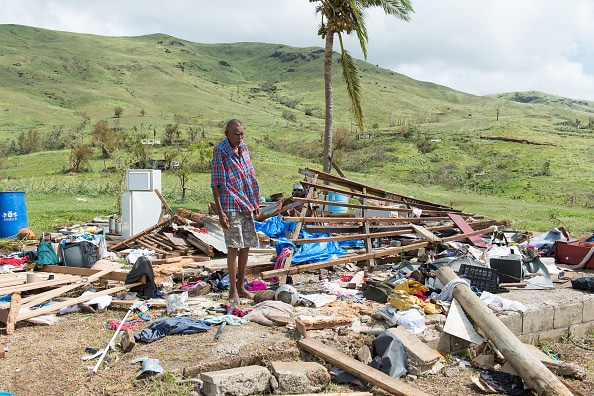In the wake of Federal Cabinet’s climate change policy negotiations, a topic less discussed is what will happen when a mass of migrants flood Australia’s shores after being displaced because of climate change.
Dr Ian Fry from the ANU Fenner School of Environment and Society, and the Pacific representative to the UN for the International Council on Environmental Law, shares some sobering statistics.
“On average, there are 26 million people per year displaced by floods, storms, and other climate related disasters, so that’s around 71,000 people per day globally. It’s quite a serious issue,” Dr Fry said.
“Most of those people are displaced within their own country but a certain percentage are displaced across international borders.”
Australia’s legal framework doesn’t recognise the term ‘climate refugees’ because people internationally displaced due to climate issues aren’t classified as refugees; that only refers to people who have been forced to leave their country to escape war or persecution.
“This is a challenge under our current migration law and refugee policy because these people aren’t defined as refugees under convention, therefore wouldn’t be eligible to come to Australia,” Dr Fry said.
“But it’s highly likely there will be greater pressure on people, particularly from South-East Asia, to come to Australia as a consequence of climate change, and that’s only going to rise. The recent IPCC report supports that evidence.”
Dr Fry said Australia definitely needs to change its refugee policy to cover people displaced by climate change.
“In fact, Tuvalu tried to initiate some work at the UN to start a legal regime to give protection to people displaced by climate change and the Human Rights Committee is doing some work on that as well. But there is still the legal uncertainty for people who are displaced by climate change, so Australia would need to create a new category for these people,” he said.
“If these laws were changed, Canberra would see an increase in international migrants displaced by climate change.”
According to Dr Fry, the countries most likely to feel the wrath of climate change, causing international displacement, are countries in South-East Asia, like Bangladesh. Low lying countries will be impacted by severe weather events, and droughts in nations including Afghanistan and Pakistan will become a serious problem, causing displacement.
“It’s more than likely Afghan people will be displaced because of drought,” Dr Fry said.
“In the Pacific, there aren’t so many people being displaced right now, but those coral atoll countries will see sea levels rise in the future and more severe weather events which will cause displacement.”
In 2016, Fiji suffered the most intense cyclone in the Southern Hemisphere, Cyclone Winston, which wreaked havoc across the islands, destroying 30,000 homes, almost 500 schools and 88 medical and health clinics, and killed at least 42 people. After this extreme weather event, the Fiji Government announced they would relocate more than 28 villages away from the coast to avoid the impact of storm surges.
Just over 1,150km away in Tuvalu, Cyclone Pam whirled through the islands in 2015, cutting an island in half and causing one islet to vanish altogether.
Dr Fry said the science tells us cyclones are going to get worse, and we will eventually have to face the fact that severe cyclones will affect Queensland and Western Australia.
“Inevitably, people will be displaced in these states, and places like Surfers Paradise [Gold Coast, Queensland] are going to be put under serious threat,” Dr Fry said.
“It’s also highly likely as we keep pushing the boundaries of agriculture, the drought on the lands used for farming will become more severe and a greater section will become unusable.”
When it comes to the Australian Government’s climate change targets, Dr Fry is clear: they are totally inadequate.
“The targets by the Australian Government are totally inadequate while Australia’s emissions are taking us in the global top five, with the highest per capita emissions in the world. As we are seeing now, Cabinet is battling with having a target of net zero by 2050 and the Nationals pushing back on that, but the international community is looking at us to take decisive action,” he said.
“It’s in our own national interest.”
Get all the latest Canberra news, sport, entertainment, lifestyle, competitions and more delivered straight to your inbox with the Canberra Daily Daily Newsletter. Sign up here.



